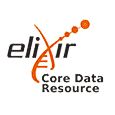
Small-angle scattering (SAS) methods are increasingly used to study the 3D structure of biomacromolecules, either by themselves or in conjunction with other techniques (e.g., crystallography, NMR, 3DEM). The wwPDB has convened an SAS Task Force made up of experts in X-ray and neutron scattering, as well as experts in crystallography, NMR, 3DEM, modeling and archiving.
The Task Force had its inaugural meeting in 2012, where it considered whether the archiving of SAS-based models would be of value to the structural biology community and, if so, what kinds of experimental data, meta-data and validation methods would be required. A report summarizing the Task Force recommendations was published in the journal Structure (Trewhella et al., 21, 875-881 (2013)). The Task Force strongly recommended that a global archive for SAS data and purely SAS-derived models be established, separate from (but federated with) the PDB archive.
There are a few dozen models in the current PDB archive that are based solely on SAS data. The Task Force recommends that these models are also transferred to the future SAS data and model archive, and at that stage be removed from the active PDB archive.
The Task Force also recommended that the models based solely on SAS data previously submitted to the PDB that are currently on-hold awaiting a policy decision should not be processed or archived in the PDB. Instead, they should be transferred to and processed by the future SAS data and model archive once this has been established. The wwPDB will follow this recommendation, and in addition, apply this to any similar structures deposited to the PDB archive. These SAS entries will be issued an ID, but not processed or released.
Questions may be sent to info@wwpdb.org


